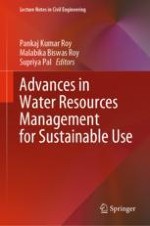2021 | OriginalPaper | Chapter
10. Perspectives on Chemical Warfare and Emergence of Antibacterial Resistance in Water Environment
Authors : Minakshi Ghosh, Pankaj Kumar Roy
Published in: Advances in Water Resources Management for Sustainable Use
Publisher: Springer Singapore
Activate our intelligent search to find suitable subject content or patents.
Select sections of text to find matching patents with Artificial Intelligence. powered by
Select sections of text to find additional relevant content using AI-assisted search. powered by
